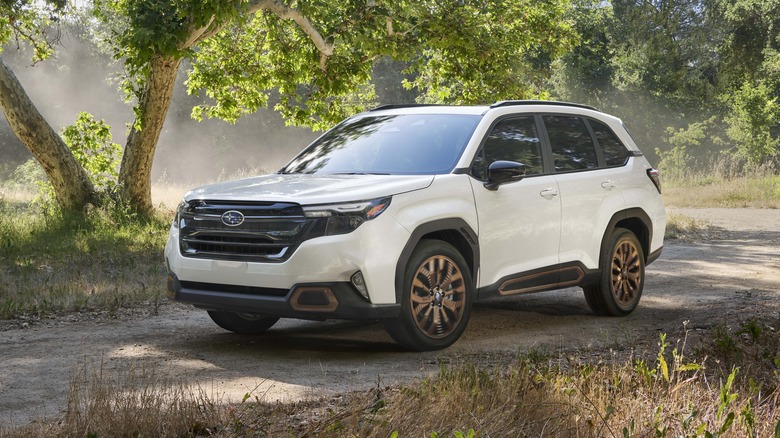Subaru has gained a large fan base among those who love outdoor adventures, thanks to its dependable and strong SUVs designed for off-road travel. One of its popular models is the Subaru Forester, which is now in its sixth generation. As an automotive mechanical engineer, I have spent more than 10 years evaluating and testing vehicles. During this time, I have driven various versions of the Subaru Forester, and every model has performed well for both everyday use and challenging outdoor activities with few significant problems.
In reality, based on my experience, the Subaru Forester stands out as one of the most dependable small SUVs ever made, having endured the challenges I’ve subjected it to. This reliability is largely due to the naturally aspirated four-cylinder Boxer engine and the symmetrical all-wheel drive system, making the Forester a great option for mild off-road adventures. Nevertheless, even though it provides significant off-road performance in a contemporary design, the Subaru Forester still involves trade-offs because of its emphasis on certain features.
For example, although it may excel in terms of dependability, allowing it to reach over 200,000 miles with minimal maintenance, it could fall short in aspects such as hauling capability. Indeed, if pulling a trailer is important to you, you might find the Forester’s constraints annoying, as its top trim, the Wilderness model, is limited to towing just 3,000 pounds, significantly less than rivals like the Jeep Cherokee or Land Rover Discovery Sport, which can tow 4,500 and 4,409 pounds respectively.
Read more: 6 Vehicles Featuring the Most Effective All-Wheel Drive Systems (And 2 With the Least Efficient)
The Subaru Forester Goes Beyond Being Suitable for Dirt Roads
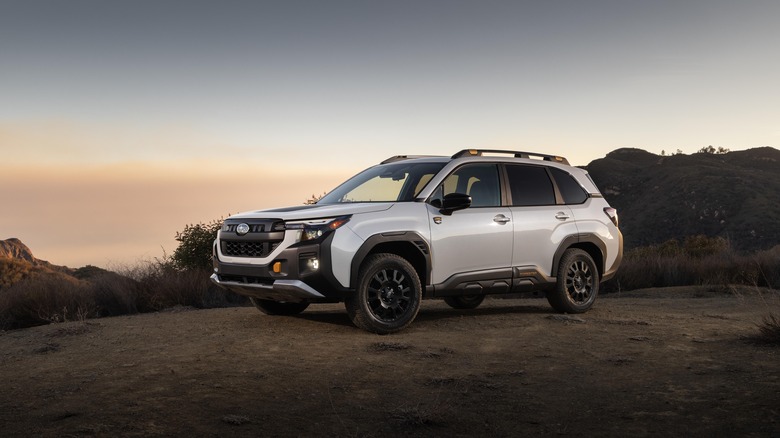
A major attraction of the modern Subaru Forester is its commitment to off-road capabilities. From my experience, those who enjoy adventures and seek a vehicle capable of navigating deep into the wilderness, as well as through mud and mountain paths, will be satisfied with the2025 Subaru ForesterIt features a symmetrical all-wheel-drive system and 8.7 inches of ground clearance, making it suitable for decent off-road performance.
Of course, not every Forester model is intended for intense off-road use, but higher trims, such as the 2025 Wilderness version, offer unique features like a dual-function X-Mode with multiple traction options for various driving scenarios. It also includes all-terrain tires, which are designed to assist drivers in challenging weather and rugged landscapes. While these aggressive all-terrain tires may impact fuel economy, they are beneficial because they provide excellent grip during off-road adventures.
Adrenaline Enthusiasts May Want to Explore Other Options
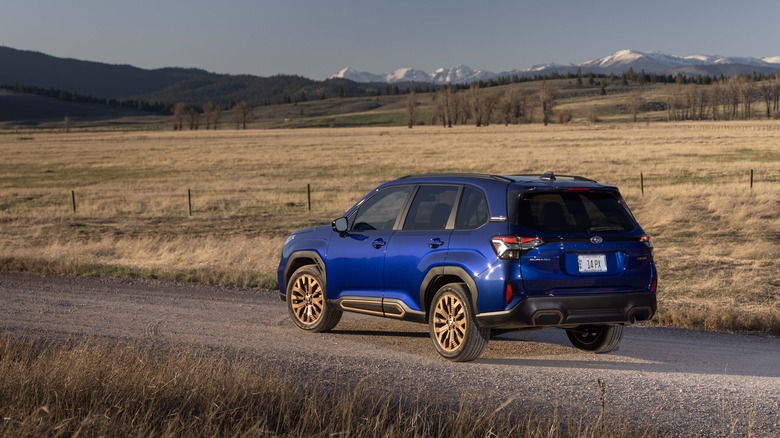
Although the Subaru Forester is considered one of the top compact SUVs, it’s important to note that it isn’t extremely powerful. It features a naturally aspirated 2.5-liter four-cylinder Boxer engine that delivers 182 horsepower and 176 lb-ft of torque in the Wilderness version, and 180 horsepower along with 178 lb-ft of torque in other trims. If you try to push it beyond its limits, you will likely experience the limitations.
If you’re interested in purchasing a pre-owned compact crossover, you may consider the 2018 Forester. Positively speaking, it features a dependable, yet fuel-efficient engine and extra performance capabilities. However, despite these advantages, it is one of theSubaru vehicles to avoid at all costs, as driving at higher speeds can make the steering somewhat unstable.
In terms of acceleration, the Forester is somewhat slow, reaching 60 mph in approximately 10 seconds or less. If you’re looking for quicker acceleration, you might prefer the turbocharged engine in Subaru’s Outback, or the options available in competitors such as the Mazda CX-5 and Honda CR-V.
Spacious And Practical Cabin
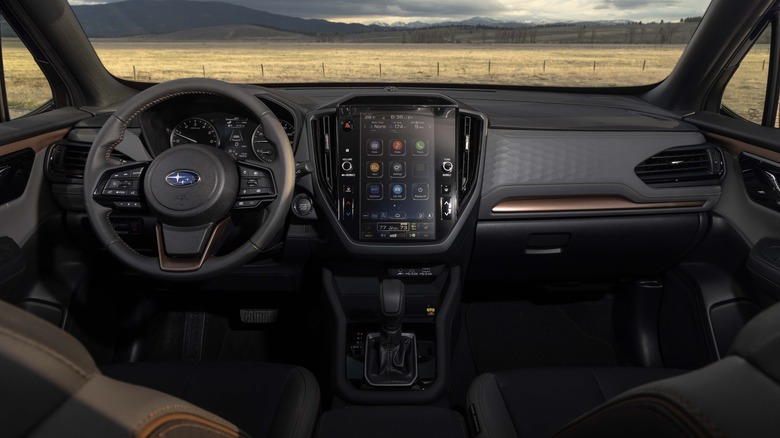
In addition to providing exceptional performance, the Forester has a dedicated following for several other reasons. One of the most frequently mentioned advantages is its storage capacity. During test drives of different Subaru Forester models, I discovered that this vehicle offers one of the top cargo spaces in its category. Indeed, the 2025 Subaru Forester is ideal for shopping trips, and with the seats folded down, it provides 74.2 cubic feet of room that can easily accommodate large outdoor equipment or small furnishings.
The cabin is also spacious. It includes raised seating along with plenty of headroom and legroom — 41 inches of headroom and 43 inches of legroom in the front, and 39 inches of headroom and legroom in the back — which provides a bright and elevated driving position. Another notable feature of the Forester is its user-friendly infotainment system. While the base model only has one USB-A port, choosing a higher trim, such as the Forester Premium, gives you an 11.6-inch screen that allows easy control of various apps, entertainment options, and navigation.
Loud Cabin and Rigid Suspension
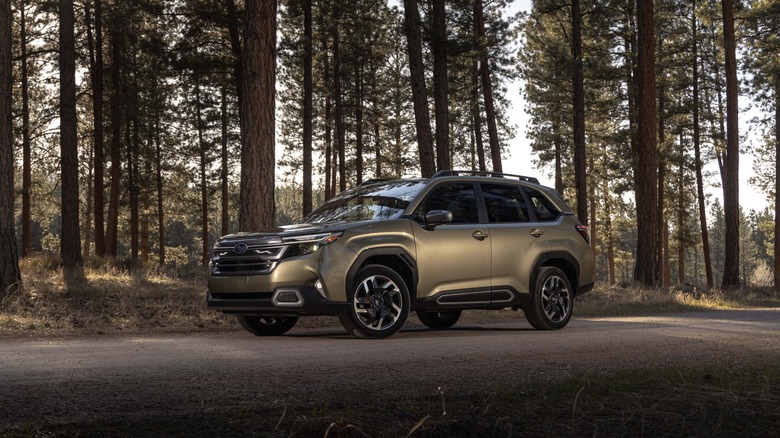
Although the Subaru Forester has an 8.7-inch ground clearance, it is considered one of thebest off-road vehiclesFor casual off-road use, it also comes with some disadvantages. Now, the increased ground clearance causes the Subaru Forester to ride higher than most compact SUVs. Consequently, when you reach highway speeds, the sound of wind whistling through the tall windows and A-pillars, along with road and tire noise, becomes more noticeable compared to competitors such as the RAV4 or CR-V.
Certainly, this may not be a major issue for most drivers, particularly those who commute daily. However, if you’re embarking on an extended road journey at speeds exceeding 55mph, the absence of effective sound insulation could become a significant problem. Indeed, I’ve had to increase the radio volume to make up for it, but those who value a quiet interior would likely prefer improved soundproofing.
In terms of off-road experiences, the Subaru Forester provides significant comfort, largely due to its mentioned suspension system. However, this feature also has a downside on highways. The tuning leads to noticeable bumps when driving over city potholes and rough roads, which many passengers don’t often bring up. That’s why, if you’re typically an urban driver, these harsh vibrations might encourage you to choose more smoothly riding crossovers such as the Hyundai Tucson.
Seeking the newest developments in technology and automotive trends?Sign up for our free email newsletterFor the most recent news, professional advice, and step-by-step instructions, delivered one email at a time.
Read the original article on .

